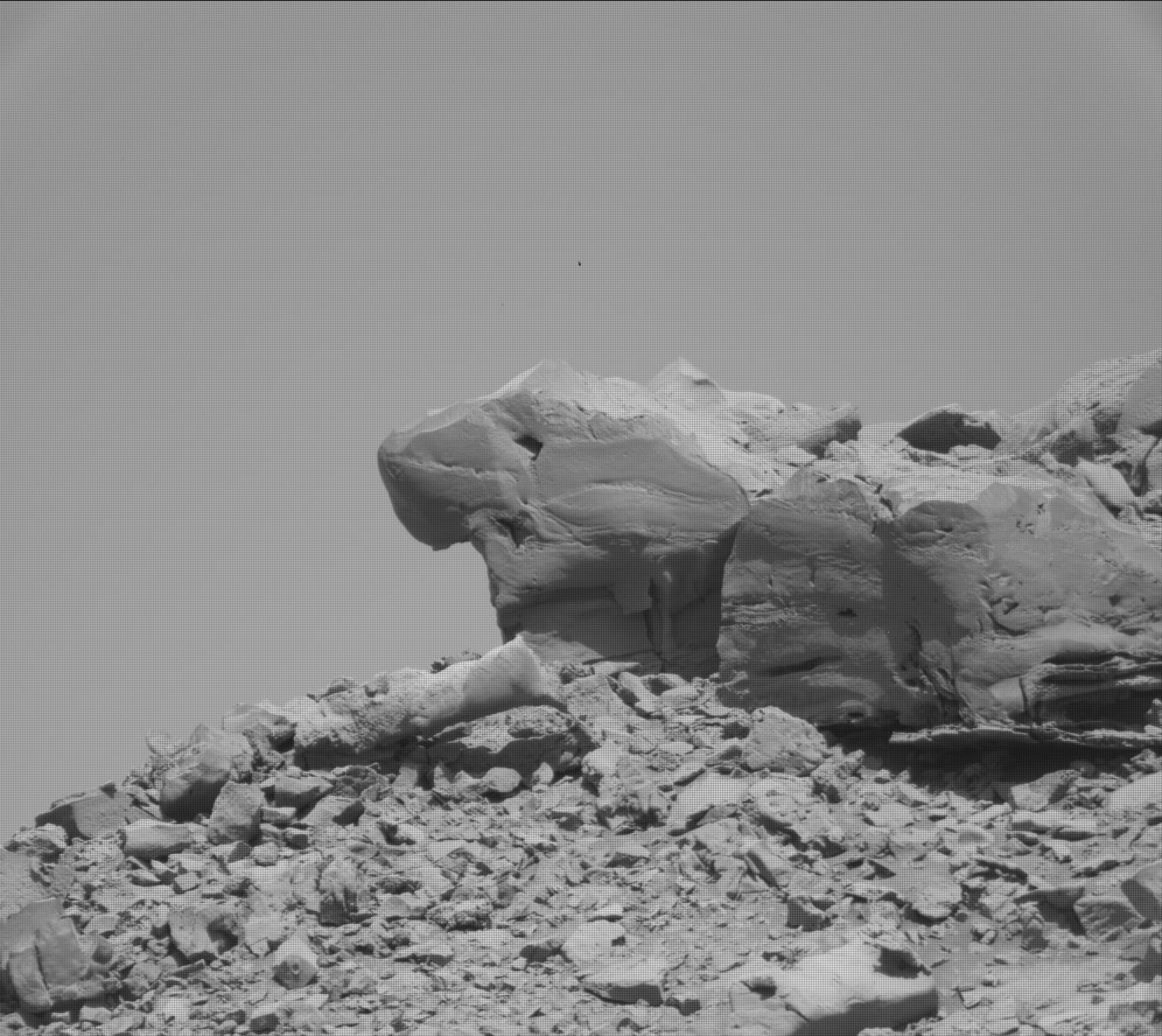3 min read

The Curiosity rover is still at the highest point it will reach on “Western Butte,” having done a short bump to allow it to do contact science. You can check out the map of Curiosity’s location here. The team would like to understand the composition, morphology, and ultimately, the origin of the capping unit of this butte. An image of this capping unit is shown above, taken by the Mastcam M100 camera on Sol 2635. The rocks look really interesting and unusual, but the butte is too steep to drive to the top to sample them. Fortunately, nature is kind to us, and somewhat like humans drop scraps to their pet dog under the table, nature has rolled some samples down to where the rover is. Some of those samples were highlighted in an earlier post. I gave a presentation within the team today on the first results of those rocks, while the rover makes more observations of them and of other features in the area.
Today the team planned two action-packed sols. Our planning session started rather late due to the lateness of the data downlink. This plan is a big opportunity for contact science, as the rover is on stable ground after being for several days with a wheel perched on a rock. Targets “Buchan Haven” (overnight) and “Heinrich Waenke” will be observed by APXS. The DRT is planning to be used. MAHLI will take images of “Abernethy,” “Lochmond Hills,” “Buchan Haven,” and “Heinrich Waenke” (as close as 1 cm standoff distance). Additionally, there are Mastcam images of “Hangingstone Hill” (a dark float rock, potentially from the capping unit), “Strathy Point” (a nodule), “White Rashes” (local bedrock), and a 15x8 “Glen Torridon Mount Sharp Ascent Route” mosaic with the M100 camera. Mastcam will also observe “Buchan Haven,” “Crianlarich Hills” (2 images), and will take an image of the calibration target. ChemCam will do a combination of long-distance imaging and compositional analyses of targets near the rover. The latter are “Hangingstone Hill,” “Strathy Point,” and “White Rashes,” mentioned above. The long-distance mosaics are “Glen Docherty” and “LD Sulfate 2640a.” Navcam will take a dust-devil movie. There is also a DAN active observation, a SAM scrubber activity, a Mastcam full tau, and RAD and REMS get-data activities.
The contact-science target “Heinrich Waenke” honors a late German scientist of that name (1928-2015) who was instrumental in the development of the APXS instrument, which was originally on the Sojourner rover, then was used on MER, and is now on MSL.
Written by Roger Wiens, Geochemist at Los Alamos National Laboratory







